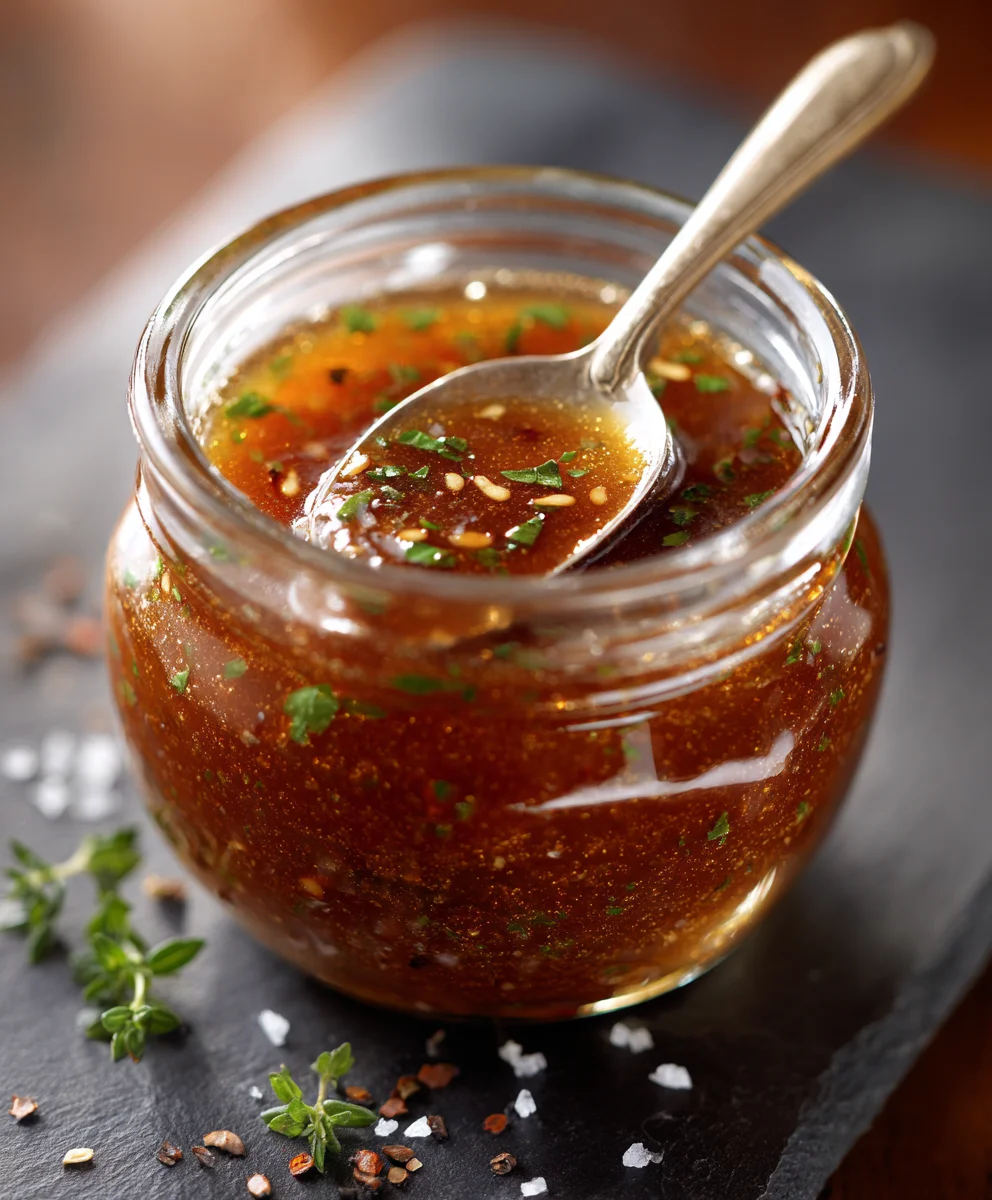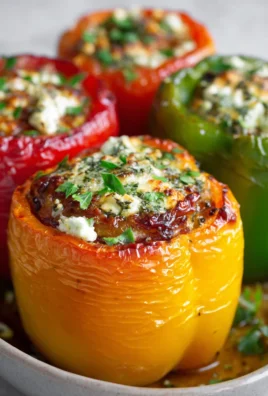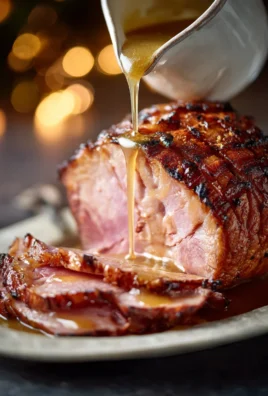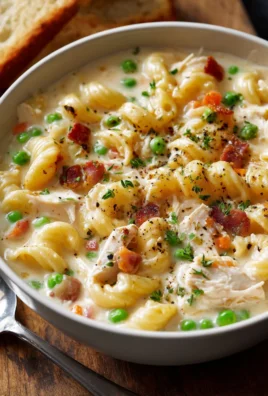Sauces Marinades are truly the unsung heroes of culinary artistry. I often find myself marveling at their incredible power to transform even the simplest ingredients into extraordinary meals. Have you ever wondered how a seemingly plain piece of chicken or a humble vegetable can be elevated to a dish bursting with vibrant flavor and tantalizing aroma?
Unlock Unforgettable Flavor with Sauces Marinades
The answer, my friends, often lies in the masterful application of these liquid wonders. Their history is as rich and diverse as the flavors they impart, with traditions stretching back centuries across various cultures – from the ancient Mediterranean use of brine for preservation and tenderization to sophisticated Asian glazes that create layers of complex taste and texture. People unequivocally adore these concoctions not just for their ability to infuse deep, nuanced flavors and improve the texture of various proteins, but also for the sheer convenience they offer.
A quick soak in a well-crafted marinade can turn a weeknight dinner into a gourmet experience with minimal effort. I truly believe that mastering the art of creating and utilizing various Sauces Marinades unlocks a world of culinary possibilities, making every bite an adventure and elevating your home cooking to new heights. Join me as we explore the magic!

Ingredients:
- For the Herb-Marinated Roasted Chicken:
- 1 (4-5 pound) whole roasting chicken, giblets removed
- ¼ cup olive oil, plus more for drizzling
- 2 tablespoons fresh lemon juice (from about 1 medium lemon)
- 6 cloves garlic, minced (approximately 2 tablespoons)
- 1 tablespoon fresh rosemary, finely chopped
- 1 tablespoon fresh thyme leaves, finely chopped
- 1 teaspoon dried oregano
- 1 teaspoon smoked paprika
- 1 teaspoon salt, plus more for seasoning
- ½ teaspoon black pepper, freshly ground, plus more for seasoning
- ¼ cup chopped fresh parsley, for garnish
- For the Roasted Root Vegetables:
- 1 ½ pounds small red potatoes, quartered or halved if small
- 1 pound carrots, peeled and cut into 1-inch chunks
- 1 large red onion, cut into ¾-inch wedges
- 1 red bell pepper, cored, seeded, and cut into 1-inch strips
- 1 yellow bell pepper, cored, seeded, and cut into 1-inch strips
- 3 tablespoons olive oil
- ½ teaspoon salt
- ¼ teaspoon black pepper, freshly ground
- 1 teaspoon dried rosemary or 1 tablespoon fresh, chopped
- For the Garlic-Lemon Pan Sauce:
- Pan drippings from the roasted chicken
- ½ cup dry white wine (like Sauvignon Blanc or Pinot Grigio), optional, but highly recommended
- 1 cup low-sodium chicken broth
- 2 cloves garlic, minced
- 1 tablespoon fresh lemon juice
- 2 tablespoons unsalted butter, cold and cut into cubes
- 1 tablespoon chopped fresh parsley or chives, for garnish
Preparation Phase 1: Crafting Our Flavorful Marinade and Preparing the Chicken
The heart of any truly spectacular dish often lies in its Sauces Marinades. For this roasted chicken, we’re going to create a simple yet incredibly potent herb-garlic-lemon marinade that will infuse our chicken with layers of delicious flavor and ensure it stays wonderfully juicy throughout the roasting process. This step is where we lay the foundation for a truly memorable meal, so let’s give it our full attention!
-
Prepare the Marinade: In a medium-sized bowl, I like to combine the ¼ cup of olive oil, 2 tablespoons of fresh lemon juice, 6 cloves of minced garlic, 1 tablespoon of finely chopped fresh rosemary, 1 tablespoon of finely chopped fresh thyme leaves, 1 teaspoon of dried oregano, 1 teaspoon of smoked paprika, 1 teaspoon of salt, and ½ teaspoon of freshly ground black pepper. Give it a good whisk until all the ingredients are thoroughly combined. Take a moment to breathe in those incredible aromas – that’s the promise of flavor right there!
-
Ready the Chicken: First, remove the whole roasting chicken from its packaging and carefully take out any giblets or the neck from the cavity. I always find it helpful to give the chicken a quick rinse under cold water, both inside and out, to ensure it’s perfectly clean. The next step is absolutely crucial for crispy skin: pat the chicken thoroughly dry with paper towels. I mean really dry, inside and out. Any residual moisture will steam the skin instead of allowing it to crisp up beautifully.
-
Marinate the Chicken: Now for the fun part! Place the dried chicken in a large roasting pan or a large, sturdy zip-top bag. Pour about two-thirds of our freshly prepared herb-garlic-lemon marinade all over the chicken. Using your clean hands (I always wear food-safe gloves for this part), gently rub the marinade generously over the entire surface of the chicken, ensuring it gets into all the nooks and crannies. Don’t forget to get some inside the cavity too! Reserve the remaining one-third of the marinade for basting later – this will intensify the flavors as it cooks.
-
Chill and Infuse: Once the chicken is thoroughly coated, cover the roasting pan tightly with plastic wrap or seal the zip-top bag. Transfer it to the refrigerator and let it marinate for at least 2 hours. Honestly, for the best flavor penetration, I highly recommend marinating it for 4 hours, or even better, overnight (up to 12-18 hours). This extended marination time truly allows those beautiful herb and garlic notes to sink deep into the meat, transforming it into something extraordinary. This is where the magic of good Sauces Marinades really shines, creating a depth of flavor that can’t be rushed.
Preparation Phase 2: Roasting Our Vibrant Vegetables
While our chicken is busy soaking up all those wonderful flavors in the fridge, let’s get our accompanying roasted vegetables ready. These aren’t just a side dish; they’re an integral part of the meal, absorbing the chicken’s drippings and becoming incredibly tender and caramelized. The medley of colors and textures will make your plate sing!
-
Preheat the Oven: About an hour before you plan to start roasting, preheat your oven to 400°F (200°C). This gives the oven plenty of time to come up to temperature and ensure it’s evenly heated, which is key for perfectly roasted everything.
-
Prep the Root Vegetables: Take your 1 ½ pounds of small red potatoes. If they’re small, I simply halve them; if they’re a bit larger, I quarter them. The goal is to have pieces that are roughly the same size so they cook evenly. For the carrots, peel them first, then cut them into 1-inch chunks. They can be a bit tricky to cut, so use a sturdy knife and take your time. Slice your large red onion into ¾-inch wedges; these will caramelize beautifully and add a lovely sweetness. Finally, core, seed, and cut both the red and yellow bell peppers into 1-inch strips. Their vibrant colors will add such a pop to our dish!
-
Season the Vegetables: In a very large mixing bowl – you’ll want plenty of room to toss everything – combine all the prepped potatoes, carrots, red onion, and bell peppers. Drizzle them with 3 tablespoons of olive oil. Now, sprinkle them with ½ teaspoon of salt, ¼ teaspoon of freshly ground black pepper, and 1 teaspoon of dried rosemary (or 1 tablespoon of fresh, if you have it). Toss everything together thoroughly with your hands, ensuring every piece of vegetable is lightly coated in the oil and seasonings. This even coating is vital for achieving that perfect roasted texture and flavor.
-
Arrange for Roasting: You can either use a separate large baking sheet for the vegetables or, if your roasting pan is large enough, arrange them around the chicken after it’s been in the oven for a bit. If using a separate sheet, spread the seasoned vegetables out in a single layer. This is super important: do not overcrowd the pan! If the vegetables are piled up, they will steam instead of roast, leading to a less crispy and flavorful result. If necessary, use two baking sheets to give them space. We’re looking for beautiful browning and tender interiors.
The Grand Roast: Uniting Chicken and Vegetables
Now, it’s time to bring our marinated chicken and seasoned vegetables together in the oven. This phase is all about patience and technique to ensure both components cook perfectly, with the chicken developing a glorious golden-brown crust and the vegetables becoming tender and subtly sweet, infused with the chicken’s delicious drippings.
-
Bring Chicken to Room Temperature: About 30-45 minutes before you plan to roast, remove the marinated chicken from the refrigerator. This step helps the chicken cook more evenly and prevents it from getting shocked by the oven’s heat, resulting in a more tender final product. While it’s resting, you can give it a final sprinkle of salt and pepper if you feel it needs it.
-
Prepare for Roasting: Place the chicken, breast-side up, in your large roasting pan. I often like to tuck the wing tips underneath the body; this prevents them from burning and helps the chicken sit more stably. You can also loosely tie the legs together with kitchen twine, though this is optional. It helps the chicken hold its shape and cook more evenly, especially the inner thighs.
-
Initial Roast of Chicken: Carefully transfer the roasting pan with the chicken to the preheated 400°F (200°C) oven. Roast for 30 minutes. This initial high-heat burst helps to crisp up the skin beautifully and gives the chicken a head start on cooking. Keep a close eye on it during this phase; we want golden, not burnt!
-
Add the Vegetables: After the initial 30 minutes, carefully remove the roasting pan from the oven. Now, it’s time to add our seasoned root vegetables! If using a single roasting pan, carefully arrange the seasoned potatoes, carrots, red onion, and bell peppers around the chicken. Make sure they are in as much of a single layer as possible. If you prepared them on a separate baking sheet, simply place that sheet into the oven alongside the chicken pan.
-
Continue Roasting and Basting: Reduce the oven temperature to 375°F (190°C). Continue to roast the chicken and vegetables for another 60-90 minutes, or until the chicken reaches an internal temperature of 165°F (74°C) in the thickest part of the thigh, without touching the bone. During this time, I make sure to baste the chicken every 20-30 minutes with the reserved marinade and any pan drippings that have accumulated. This not only keeps the chicken moist but also builds layers of flavor and helps achieve that gorgeous golden-brown skin. Give the vegetables a gentle toss occasionally to ensure even browning. If the chicken skin starts to brown too quickly, you can loosely tent it with aluminum foil.
Tip for Doneness:
The most accurate way to check for doneness is with a reliable meat thermometer. When inserted into the thickest part of the thigh (away from the bone), it should read 165°F (74°C). The juices should also run clear when you pierce the thigh with a knife. Don’t underestimate the importance of this step for food safety and deliciousness!
-
Rest the Chicken: Once the chicken reaches the target temperature, carefully remove the roasting pan (and vegetable tray, if separate) from the oven. Transfer the roasted chicken to a clean cutting board and tent it loosely with aluminum foil. Let it rest for at least 15-20 minutes before carving. This resting period is non-negotiable! It allows the juices to redistribute throughout the meat, resulting in an incredibly tender and moist chicken. While the chicken rests, the vegetables can stay warm in the turned-off oven or be kept warm separately.
Crafting the Exquisite Garlic-Lemon Pan Sauce
While the chicken is resting, we’re going to elevate our meal further by transforming those incredible pan drippings into a luxurious and flavorful garlic-lemon pan sauce. This is a testament to how fantastic Sauces Marinades can be, even those made on the fly from the roasting pan. This quick sauce will tie all the flavors of our dish together beautifully, adding a touch of elegance and an explosion of taste.
-
Deglaze the Pan: Carefully pour off most of the accumulated fat from the roasting pan, leaving behind all those lovely browned bits (fond) and just a tablespoon or two of fat. Place the roasting pan over two burners on your stovetop set to medium heat. Pour in the ½ cup of dry white wine (if using). Use a wooden spoon or spatula to vigorously scrape up all those flavorful browned bits from the bottom of the pan. The wine will bubble and reduce quickly, dissolving all that delicious caramelized goodness. If not using wine, use an additional ½ cup of chicken broth for this step.
-
Build the Sauce Base: Once the wine has mostly evaporated (about 1-2 minutes), add the 1 cup of low-sodium chicken broth and the 2 cloves of minced garlic to the pan. Bring the mixture to a simmer, stirring occasionally. Let it gently simmer for about 5-7 minutes, allowing the sauce to reduce slightly and the flavors to meld beautifully. You’ll notice it thickening just a touch.
-
Finish with Butter and Lemon: Remove the pan from the heat. This is where we add richness and brightness. Add the 1 tablespoon of fresh lemon juice and the 2 tablespoons of cold unsalted butter, cut into cubes. Whisk vigorously as you add the butter, one cube at a time, allowing each to melt and emulsify into the sauce. This technique, called monter au beurre, creates a silky-smooth, glossy, and incredibly flavorful sauce that coats the back of a spoon.
Flavor Check:
Taste the sauce at this point. Does it need a pinch more salt or pepper? Perhaps a tiny squeeze more lemon juice for brightness? Adjust the seasonings to your preference. Remember, a perfectly balanced sauce elevates the entire dish.
-
Strain (Optional, but Recommended): For an extra smooth sauce, I often pour it through a fine-mesh sieve into a small saucepan or gravy boat, pressing on any solids to extract maximum flavor. This removes any errant herbs or garlic bits, resulting in a beautifully refined sauce. Keep it warm until serving.
Final Touches and Serving Suggestions
With our magnificent chicken rested, our vegetables perfectly roasted, and our exquisite pan sauce ready, it’s time to bring it all together. This final stage is all about presentation and enjoying the fruits of your labor. The harmonious blend of textures and flavors, enhanced by our carefully crafted Sauces Marinades, promises a truly satisfying dining experience.
-
Carve the Chicken: Once rested, carve the roasted chicken into individual serving pieces. I usually start by removing the legs and thighs, then separating the breast meat from the bone, slicing it into thick pieces. Don’t discard the carcass – it makes fantastic chicken stock!
-
Plate with Care: Arrange the carved chicken pieces alongside a generous portion of the roasted root vegetables on warm serving plates. I love seeing the vibrant colors together on the plate.
-
Sauce and Garnish: Drizzle a spoonful or two of the warm garlic-lemon pan sauce over the chicken and vegetables. A little goes a long way with this intensely flavorful sauce. Finally, garnish everything with a sprinkle of fresh chopped parsley (or chives, if you prefer). The fresh herbs add a final flourish of color and a burst of herbaceous aroma that completes the dish beautifully.
-
Serve Immediately: Serve your masterpiece immediately, allowing everyone to savor the delicious, comforting flavors of this homemade roasted chicken and vegetables. This dish truly showcases how the thoughtful application of Sauces Marinades can elevate everyday ingredients into something spectacular. Enjoy every single bite!

Conclusion:
And there you have it, my friends! We’ve reached the end of our culinary journey, but truly, this is just the beginning of a delicious adventure for you. I genuinely hope you’re feeling as excited as I am about the prospect of bringing this incredible dish into your kitchen. What we’ve crafted together today isn’t just another recipe; it’s a gateway to effortlessly impressive meals, a testament to how simple, fresh ingredients, when treated with a little love and the right technique, can yield truly spectacular results. The rich, savory depth, combined with that bright, zesty finish, creates a flavor profile that is absolutely unforgettable. Every bite offers a perfect balance – tender, juicy, and bursting with aromatic herbs that dance on your palate. It’s the kind of meal that makes you close your eyes and savor the moment, truly experiencing the joy of good food.
I know I’ve said it before, but it bears repeating: this recipe is an absolute game-changer for anyone looking to elevate their home cooking without spending hours in the kitchen. It’s designed for maximum flavor impact with minimal fuss, making it perfect for a weeknight dinner when you want something special but are short on time, or for a weekend gathering when you want to truly impress your guests without feeling overwhelmed. The preparation is straightforward, the ingredients are accessible, and the payoff is a dish that tastes like it came from a gourmet restaurant. It’s a wonderful blend of sophistication and simplicity, proving that you don’t need a culinary degree to create something truly magnificent.
Endless Possibilities for Serving and Variation
Now, let’s talk about taking this masterpiece even further! While the core recipe is stellar on its own, its versatility is one of its most remarkable features. For serving suggestions, think about how you want to complete the meal. A vibrant side of roasted asparagus or broccoli, tossed simply with olive oil, salt, and pepper, would complement the main dish beautifully, adding a lovely textural contrast and a fresh, green element. If you’re leaning towards something more substantial, a fluffy bed of quinoa or wild rice pilaf would be an excellent choice, soaking up all those delicious juices and creating a hearty, satisfying plate. For a lighter touch, a crisp garden salad with a simple vinaigrette would be perfect, adding a refreshing counterpoint to the rich flavors. Don’t shy away from pairing it with some creamy mashed potatoes or even a hearty artisanal bread to sop up any leftover sauce – trust me, you won’t want a single drop to go to waste!
But the fun doesn’t stop at side dishes! This recipe is incredibly adaptable, inviting you to experiment and make it your own. If you’ve used chicken, why not try it with succulent salmon fillets or tender pork tenderloin next time? The marinating technique and flavor base work wonderfully across a range of proteins. For a vegetarian or vegan option, firm tofu, tempeh, or even large portobello mushrooms would absorb the flavors magnificently, creating a plant-based sensation that’s just as satisfying. You could even skewer vegetables like bell peppers, zucchini, and cherry tomatoes with your protein for a colorful and complete kabob experience. Feel free to play with the herbs as well – if basil isn’t your favorite, a swap to fresh dill for fish, or rosemary for lamb, would introduce entirely new, yet equally delightful, nuances. The magic of this dish truly lies in its exceptional marinade, proving why investing time in crafting quality Sauces Marinades is always worth it.
Furthermore, consider different cooking methods. While grilling imbues a smoky char that is undeniably delicious, this recipe also shines when baked in the oven until golden brown, or pan-seared to perfection, developing a beautiful crust. For those who love a slow cooker, adapting it for a longer, gentler cook could yield incredibly tender results. The possibilities are genuinely endless, and each variation promises a new discovery, making this a recipe you’ll return to again and again, each time with a fresh twist.
Your Turn: Embrace the Flavor!
So, now it’s your turn! I wholeheartedly encourage you to roll up your sleeves, gather your ingredients, and give this recipe a try. Don’t just read about the amazing flavors; experience them for yourself. You’ll be amazed at how easily you can create something so deeply satisfying and incredibly delicious. This isn’t just about following instructions; it’s about connecting with your food, understanding how flavors meld, and creating something wonderful from scratch. Imagine the pride you’ll feel when your family or friends ask for the recipe, utterly captivated by the taste!
And when you do, please, please, please come back and share your experience with me and our growing community. I absolutely love hearing your success stories, seeing your creative variations, and learning about how you’ve made this recipe your own. Did you serve it with something unexpected? Did you add a secret ingredient that took it to the next level? Perhaps you captured a stunning photo of your finished dish? Tag me, leave a comment below, or send me a message! Your feedback and shared moments inspire me and help all of us discover new ways to enjoy fantastic food. Let’s make this a conversation, a shared culinary adventure. Until next time, happy cooking, and I can’t wait to hear all about your delicious journey!

Herb-Marinated Roasted Chicken & Root Vegetables with Garlic-Lemon Pan Sauce
Discover the transformative power of Sauces Marinades with this recipe for herb-marinated roasted chicken and vibrant root vegetables, finished with an exquisite garlic-lemon pan sauce. This dish highlights how masterful application of marinades can elevate simple ingredients into an extraordinary meal, infusing deep, nuanced flavors and ensuring perfectly tender results.
Ingredients
-
1 (4-5 pound) whole roasting chicken
-
¼ cup olive oil
-
2 tablespoons fresh lemon juice
-
6 cloves garlic, minced
-
1 tablespoon fresh rosemary, chopped
-
1 tablespoon fresh thyme leaves, chopped
-
1 teaspoon dried oregano
-
1 teaspoon smoked paprika
-
1 teaspoon salt
-
½ teaspoon black pepper
-
¼ cup chopped fresh parsley (for garnish)
-
1 ½ pounds small red potatoes, quartered or halved
-
1 pound carrots, peeled and cut into 1-inch chunks
-
1 large red onion, cut into ¾-inch wedges
-
1 red bell pepper, cored, seeded, and cut into 1-inch strips
-
1 yellow bell pepper, cored, seeded, and cut into 1-inch strips
-
3 tablespoons olive oil (for vegetables)
-
½ teaspoon salt (for vegetables)
-
¼ teaspoon black pepper (for vegetables)
-
1 teaspoon dried rosemary or 1 tablespoon fresh, chopped (for vegetables)
-
Pan drippings from the roasted chicken
-
1 ½ cups low-sodium chicken broth (substituted for white wine + original broth)
-
2 cloves garlic, minced (for sauce)
-
1 tablespoon fresh lemon juice (for sauce)
-
2 tablespoons unsalted butter, cold and cut into cubes
-
1 tablespoon chopped fresh parsley or chives (for sauce garnish)
Instructions
-
Step 1
In a bowl, combine ¼ cup olive oil, 2 tbsp lemon juice, 6 cloves minced garlic, 1 tbsp rosemary, 1 tbsp thyme, 1 tsp oregano, 1 tsp smoked paprika, 1 tsp salt, and ½ tsp black pepper. Whisk. Remove giblets from chicken, rinse, and pat very dry. Place chicken in a roasting pan or zip-top bag. Rub two-thirds of the marinade over the chicken, including cavity. Reserve remaining marinade. Cover and refrigerate for 4-18 hours for best flavor. -
Step 2
Preheat oven to 400°F (200°C). Prep potatoes, carrots, red onion, and bell peppers as specified. In a large bowl, toss prepped vegetables with 3 tbsp olive oil, ½ tsp salt, ¼ tsp black pepper, and 1 tsp dried or 1 tbsp fresh rosemary. Spread vegetables in a single layer on a baking sheet, ensuring not to overcrowd. -
Step 3
Remove chicken from fridge 30-45 minutes before roasting. Place chicken, breast-side up, in roasting pan. Roast in preheated 400°F (200°C) oven for 30 minutes. Remove pan, add seasoned vegetables around the chicken (or place separate vegetable sheet in oven). Reduce oven to 375°F (190°C). Continue roasting for 60-90 minutes, basting chicken every 20-30 minutes with reserved marinade and pan drippings. Toss vegetables occasionally. Chicken is done when thigh reaches 165°F (74°C) and juices run clear. -
Step 4
Transfer roasted chicken to a cutting board, tent with foil, and rest for 15-20 minutes. While chicken rests, drain most fat from roasting pan, leaving browned bits. Place pan over medium heat. Add 1 ½ cups chicken broth, scraping up browned bits. Simmer for 5-7 minutes. Remove from heat, stir in 1 tbsp lemon juice and 2 tbsp cold butter (cubed), whisking until emulsified. Taste and adjust seasoning. For a smoother sauce, strain through a sieve. -
Step 5
Carve rested chicken. Arrange chicken pieces and roasted vegetables on warm plates. Drizzle with garlic-lemon pan sauce and garnish with fresh chopped parsley or chives. Serve immediately.
Important Information
Nutrition Facts (Per Serving)
It is important to consider this information as approximate and not to use it as definitive health advice.
Allergy Information
Please check ingredients for potential allergens and consult a health professional if in doubt.




Leave a Comment